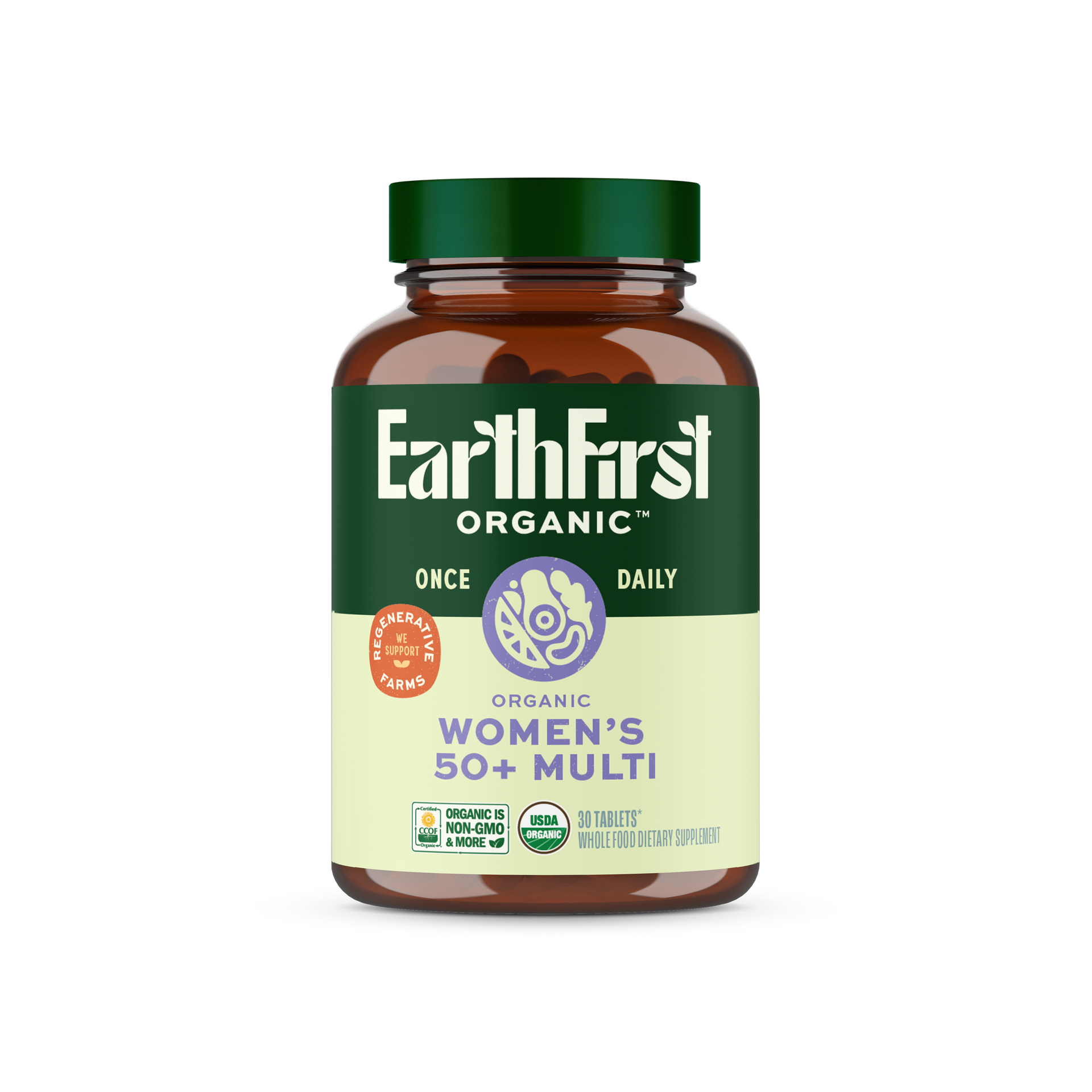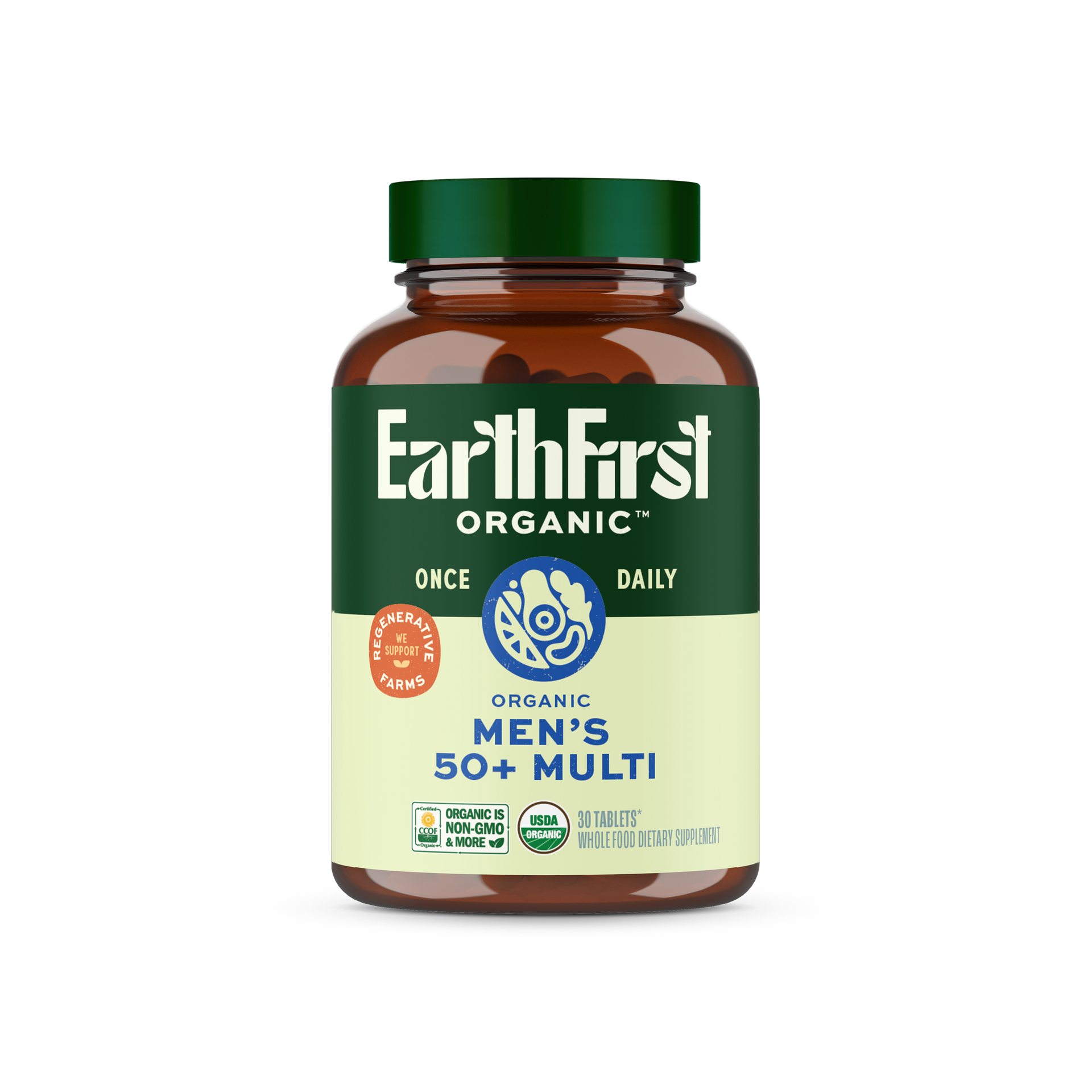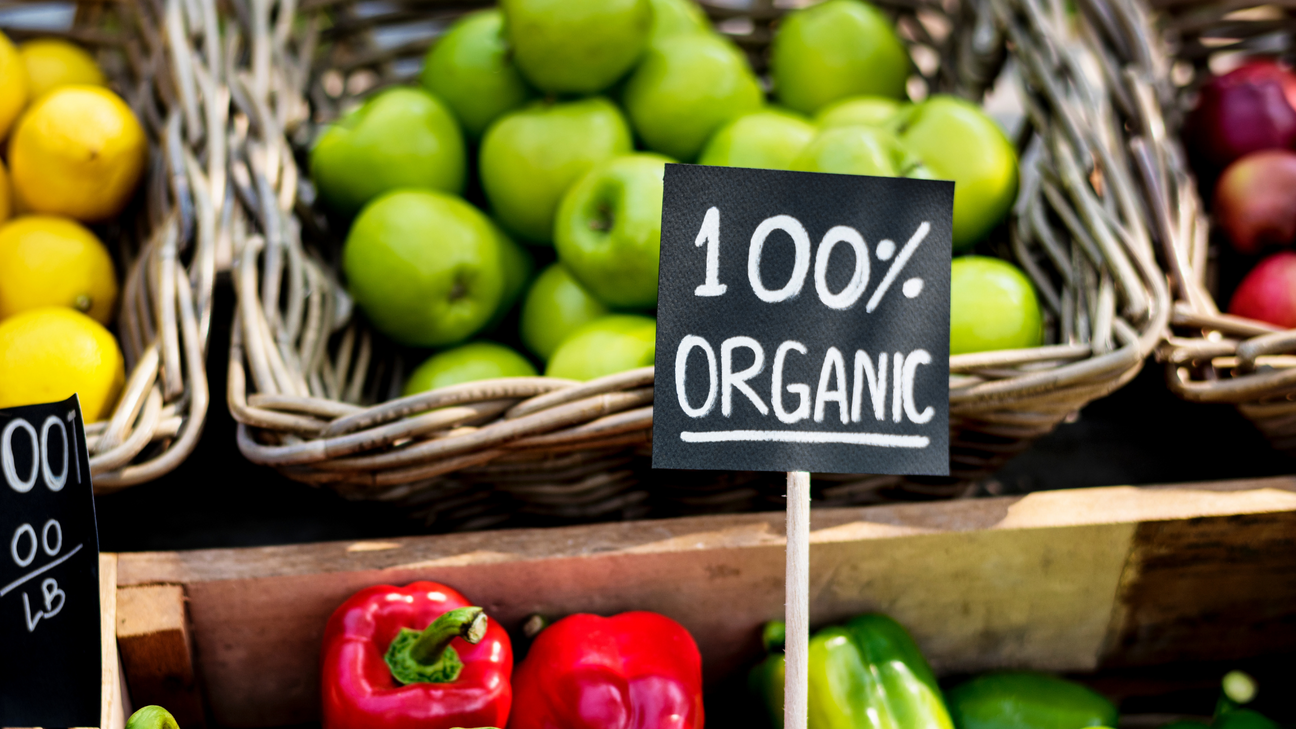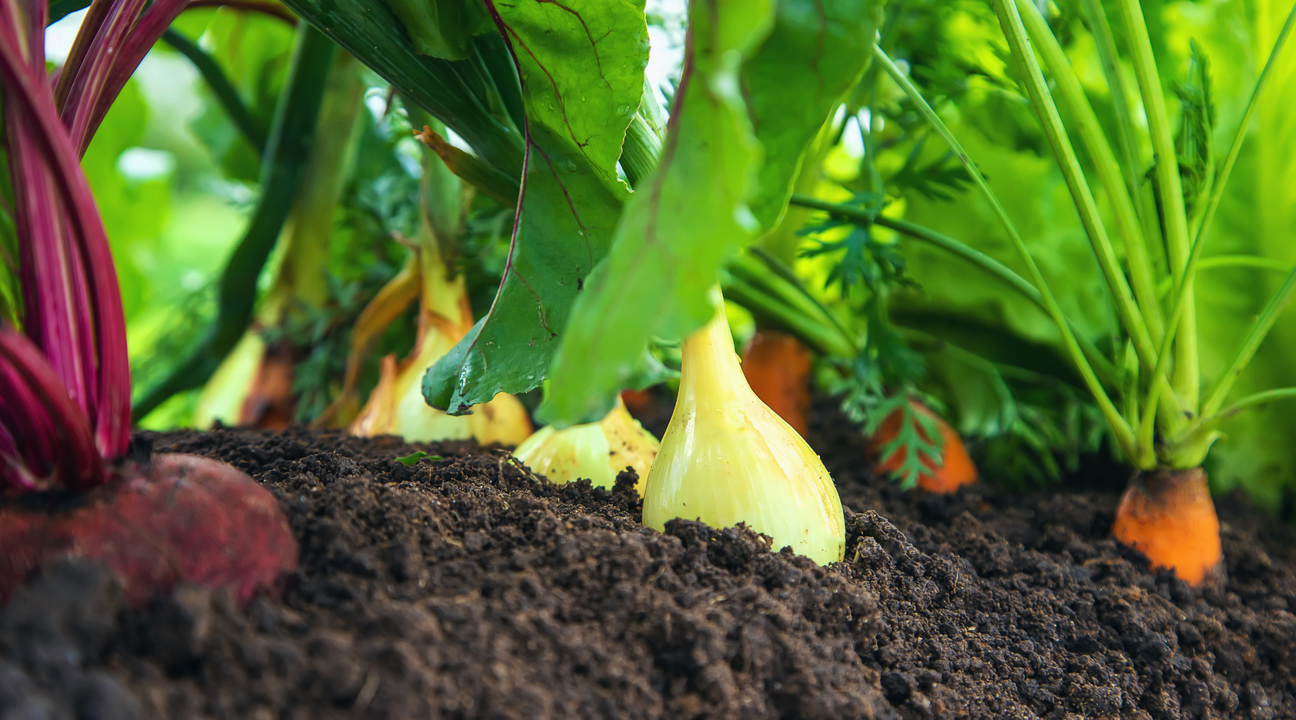Welcome to the EarthFirst community. It’s likely you’re here because you have an interest in organic multivitamins. Maybe you’ve only just started thinking about taking them, or perhaps you’re a longtime supplement consumer interested in exploring new options. Either way, you’ve made your way here, and now you’re asking yourself, “What makes EarthFirst so special?” What makes us a better choice than the next brand? What do we offer that the others don’t?
Imagine this – You’re holding a small, rectangular box in one hand. On the face of it, a browning earth tone that dims near the corners reminding you of old parchment or shades of soil. Across its center, a beautiful array of fruits and vegetables in watercolor which fade into a silhouette giving the illusion of depth and plenty. The bold colors - blues, pinks, purples - suggest which type of consumer the product is for - men, women, women and babies. Near the top of the box, you read, “Certified Organic Whole Food.” Lower down, it pronounces itself again as a “Whole Food Multivitamin.” Stamped just above the bottom edge, the certified USDA Organic and Non-GMO Verified logos give you reassurance. It feels like you could have pulled this box and its thirty vegan tablets up from the ground itself.
But is it really organic? What do those certifications mean? How can you know for certain?
What is greenwashing?
Greenwashing is the catch-all term we use to describe any business, institution, or organization found making false or misleading claims about the environmental - and consequently, human - impact of their goods or services. This predatory practice targets consumers concerned with how their spending habits are affecting the earth. With a rapidly growing number of eco-conscious consumers across the globe, more often companies are leveraging loopholes in current certification processes or pushing clever-yet-distorted marketing campaigns to sell themselves as better for you and better for the world.
What does greenwashing look like?
Think back to the description of the box at the top of this blog – the earth tone, the pastoral imagery, the phrasing that underscores how healthy and natural and organic its contents are. It would be unfair to dismiss any product outright that makes you feel closer to the earth and closer to a healthier version of yourself when the fact is there are companies doing their very best to meet your standards. Take us, for example, EarthFirst – our name speaks to our principles and practices. But more on that later. For now, it’s worth being reminded of the old adage trust but verify. The unfortunate truth is that most of the leading organic brands you find on shelves today use imagery and buzzwords that go a long way to provide a consumer with a sense of virtue and relief without delivering wholesale on the promise. The Natural Resources Defense Council, a non-profit international environmental advocacy group, spells out in greater detail these and other marketing tactics that companies commonly employ, including products that lean on official-looking labels, companies that tout their latest sustainability initiative, and ambitious climate pledges with few specific or quantifiable changes [1].

But what about that USDA Organic logo?
You’ve seen it. You know it. You’ve come to rely on it. The green and white seal with the faint lines running together like row crops. But what does it mean? The U.S. Department of Agriculture defines organic as, “a label that indicates that a food or agricultural product has been produced according to the USDA organic standards, which require operations to use practices that cycle resources, conserve biodiversity, and preserve ecological balance.” Those standards are established by the USDA National Organic Program with “specific requirements for different types of products,” i.e. livestock, produce, dairy, poultry, packaged goods, etc. The institution of national standards goes back to the Organic Foods Production Act of 1990. But it was in 2002 that a system of certification was introduced. During the intervening decade, public demand grew for organic food, and farmers and distributors rushed to seize on this new appetite. Now, though, they had to qualify for that little green stamp of approval.
But there were problems from the very beginning, some of which persist to this day. For a crop to be certified organic means they must not have been exposed to certain toxic chemicals, and wiggle room is granted for any accidental contamination usually occurring when an organic farm neighbors a non-organic farm. Then again, it’s not the crop but the land at-large that becomes certified through a process requiring farmers and distributors to hire an accredited third-party certifier. This means two things: 1) that those third-party inspectors are financially motivated to certify farms and 2) that just because a field or farm is awarded a certification doesn’t mean that the crop provided by the certified farmer or distributor is organic. The latter implies fraudulent behavior, no doubt. But the legality of it is murky at best.? These and other issues related to the USDA Organic certification process have resulted in numerous lawsuits, though perhaps immortalized best in the case of Randy Constant.
Constant, a small-town businessman from Missouri, orchestrated what Ian Parker at the New Yorker described as “the largest-known fraud in the history of American organic agriculture.” [2] By purposefully misleading distributors to believe that he was supplying them with organic foods, Constant caused “customers to spend at least a quarter of a billion dollars on products falsely labeled with organic seals,” according to the prosecutors that filed charges against him. In the nearly two decades that Constant was operating his fraudulent businesses - note plural - nearly every American consumer who regularly purchased an organic product from their local grocery store paid into Constant’s scheme. Plenty more about Randy Constant can be found online, but what his multi-decade “organic” scam highlighted was a flawed and compromised system that resulted in millions of consumers like you overspending for goods that were ultimately detrimental to their well-being.
But better to be organic than not, right?
Common sense tells us that anything labeled organic or natural is, at the very least, better than the alternative. In our blog about prenatals, we cover the nutritional advantages of organic supplements compared to synthetic supplements, and how the chemical makeup of synthetic multivitamins may actually be doing a greater harm to our bodies and our planet than whatever benefit they promise. And even when we consider the ways a business might cheat the USDA Organic system of certification, the fact that regulation exists at all offers us some layer of protection, however thin. But if we go back to the Natural Resources Defense Council’s list of ways in which companies target unsuspecting consumers with greenwashing campaigns, we should look closer at their note about companies stamping their products with buzzwords like “organic,” “natural,” or “sustainable,” and consider if the benefit literally outweighs the cost. For example, one of the most prominent supplement companies found on the market today, has made the bold claim that their multivitamins as being are purer and more effective than competitors simply based on the design of their pills alone. This simply isn’t true. When you buy their product, you’re buying a nifty, clean-looking pill that repackages the same empty promises. In the same way upscale fashion brands repurpose and resell old t-shirts at a premium, you’re paying more because it looks cool. As consumers, their customers are spending an egregious amount on style over substance. A point driven home by the fact that their supplements offer less nutrition than most other brands. But unashamedly, they push their lab-made multivitamins using clinical language that’s meant to make you feel like they’ve done what nobody else could, by optimizing the everyday supplement.
We respect science. But it’s hard not to see the irony when we’re thinking about what is and is not healthy for us as a community. As we covered in our blog on prenatals, we know that synthetic multivitamins - aka, those made in a lab - are often more likely to be exposed to dangerous chemicals. But undeniably, labs require space which result in the reduction of land and worsening of the ongoing environmental crisis. A crisis we at EarthFirst are trying to combat through our farming practices. Nevertheless, outlandish claims about design and ingenuity have driven demand for certain products because consumers crave that sense of purity and effectiveness. So while supplements from other companies may not be any more beneficial - or even harmful for that matter - the ugly truth is that the cost differential between one product and the next means you’re overpaying for what’s under-delivering where it matters most.

So why should you trust EarthFirst?
It’s a good question. We’ve certainly given you plenty of reasons to be skeptical. But as members of the EarthFirst community, we wholeheartedly believe you deserve full transparency when it comes to the products that impact you, inside and out. To that end, let’s explore how EarthFirst is ensuring that what you see is what you get, and why we’re calling our EarthFirst multivitamins the first organic and beyond supplements.
In addition to being certified USDA Organic and Non-GMO verified, we are on the cusp of joining a coalition of farmers, environmentalists, and whole-food sellers branded Regenerative Organic Certified®. Created by the nonprofit Regenerative Organic Alliance (ROA), this novel and rigorous certification requires that the certified company employ practices that consider all matters of life in the farm system, from the soil microbiome to the animals to the employees working the land, and to you. Such practices include cover cropping, crop rotation, low- and no-till, compost, and zero use of chemical pesticides and fertilizers. The goals of Regenerative Organic Certified® companies are many, including increasing soil organic matter, sequestering atmospheric carbon in soil, ensuring ethical and humane treatment of farm animals, and providing fair conditions for all farm employees. And because the founders of the ROA include such trusted and verified brands as Patagonia, Compassion in World Farming, and the Fair World Project, you know we’re in good company.
But what about EarthFirst specifically? What makes our products worth being Regenerative Organic Certified®? To start, our partnership with regenerative organic farms across the globe, including 4,000 acres of farmland in the United States where we manufacture our supplements onsite. For this reason, when we say our multivitamins are “organic,” “whole food,” and “sustainable,” you can be sure we’re not just selling you peace of mind, but we’re giving you the vitamins and minerals you need to feel rooted in your body, too. Through our regenerative agriculture practices, we’re replenishing the Earth's nutrients, supporting families and communities around the world, and providing you with nutrient-rich ingredients that support your wellbeing from the ground up.
So join the EarthFirst community today, because you deserve a brand dedicated to ensuring you have a healthier tomorrow.


















